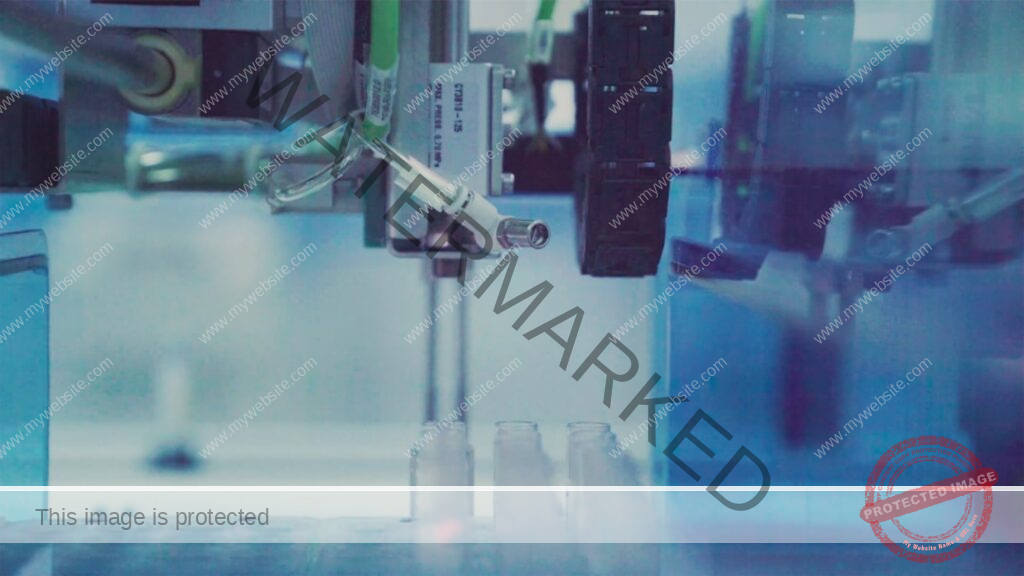Key Takeaways
- Modernization of laboratories is crucial for science and technology programs to keep up with the latest advancements.
- Upgrading laboratories can lead to improved student learning outcomes, research outcomes, and overall program quality.
- Key elements of modern laboratories include advanced equipment, flexible spaces, and integration of technology.
- Successful case studies of modernization include partnerships with industry, community engagement, and strategic planning.
- Challenges in modernizing laboratories include funding constraints, infrastructure limitations, and resistance to change, but solutions include seeking external funding, prioritizing upgrades, and involving stakeholders in the process.
Benefits of Upgrading Laboratories for Science and Technology Programs
a) Improved student learning outcomes:
Modernized laboratories provide students with access to state-of-the-art equipment and technology, allowing them to engage in hands-on learning experiences. This active learning approach has been proven to enhance student understanding and retention of scientific concepts. Additionally, modern laboratories often incorporate flexible and adaptable spaces that promote collaboration among students, fostering a deeper understanding of complex topics through peer-to-peer interaction.
b) Enhanced research capabilities:
Upgrading laboratories not only benefits students but also improves the research capabilities of faculty members. State-of-the-art equipment and technology enable researchers to conduct more advanced experiments and gather more accurate data. This leads to increased research productivity and innovation within the institution. Furthermore, modern laboratories often provide opportunities for interdisciplinary collaboration, allowing researchers from different fields to work together on complex problems.
c) Increased collaboration opportunities:
Modernized laboratories are designed with collaboration in mind. Flexible and adaptable spaces encourage students and researchers to work together on projects, fostering a sense of community within the institution. Collaboration not only enhances the learning experience but also promotes critical thinking and problem-solving skills. By working together, students can gain different perspectives and learn from their peers, leading to a more well-rounded education.
d) Better preparation for the workforce:
By upgrading laboratories to reflect real-world industry standards, educational institutions can better prepare students for the workforce. State-of-the-art equipment and technology used in modern laboratories are often the same as those found in industry settings. This allows students to gain hands-on experience with the tools and techniques they will use in their future careers. Additionally, collaboration opportunities and the emphasis on critical thinking and problem-solving skills help students develop the soft skills necessary for success in the workplace.
Key Elements of Modern Laboratories for Science and Technology Programs
a) State-of-the-art equipment and technology:
One of the key elements of modern laboratories is the incorporation of state-of-the-art equipment and technology. This includes advanced scientific instruments, computer systems, and software programs that allow students and researchers to conduct experiments and analyze data more efficiently. By providing access to cutting-edge tools, educational institutions can ensure that their students are receiving a high-quality education that prepares them for the demands of the modern world.
b) Flexible and adaptable spaces:
Modern laboratories should be designed with flexibility and adaptability in mind. This allows for easy reconfiguration of spaces to accommodate different types of experiments or collaborative projects. Flexible spaces also promote student engagement and creativity, as they can be tailored to meet the specific needs of each project or experiment. Adaptable spaces also future-proof the laboratory, allowing for changes in technology or teaching methods without requiring major renovations.
c) Sustainable and energy-efficient design:
In today’s environmentally conscious world, it is important for laboratories to be designed with sustainability in mind. This includes incorporating energy-efficient lighting systems, HVAC systems, and water-saving fixtures. Additionally, sustainable materials should be used in construction and renovation projects whenever possible. By prioritizing sustainability, educational institutions can reduce their environmental impact while also saving on energy costs.
d) Safety and security measures:
Safety should always be a top priority when designing and modernizing laboratories. This includes implementing proper ventilation systems, emergency eyewash stations, and safety showers. Additionally, laboratories should be equipped with fire suppression systems and emergency exits. Security measures, such as access control systems and surveillance cameras, should also be in place to protect valuable equipment and ensure the safety of students and staff.
Case Studies of Successful Modernization of Laboratories for Science and Technology Programs
a) Example 1: Stanford University
Stanford University recently modernized its biology laboratory facilities to enhance student learning outcomes and research capabilities. The university invested in state-of-the-art equipment, including advanced microscopes and DNA sequencing machines. The new laboratory spaces were designed to be flexible and adaptable, allowing for easy reconfiguration to accommodate different types of experiments. The modernization efforts at Stanford have resulted in improved student engagement and retention, as well as increased research productivity.
b) Example 2: Massachusetts Institute of Technology (MIT)
MIT has been at the forefront of modernizing laboratories for science and technology programs. The university has invested in cutting-edge equipment and technology, such as 3D printers and robotics systems. The laboratory spaces at MIT are designed to promote collaboration among students and researchers, with open floor plans and shared workspaces. The modernization efforts at MIT have led to increased innovation and interdisciplinary collaboration, positioning the university as a leader in scientific research.
c) Example 3: University of California, Berkeley
The University of California, Berkeley recently completed a major renovation of its chemistry laboratory facilities. The university upgraded its equipment to include state-of-the-art spectrometers and chromatography systems. The laboratory spaces were redesigned to be more flexible and adaptable, allowing for easy reconfiguration based on the needs of each experiment. The modernization efforts at UC Berkeley have resulted in improved student learning outcomes and increased research productivity.
Challenges and Solutions in Modernizing Laboratories for Science and Technology Programs
a) Budget constraints:
One of the main challenges in modernizing laboratories is budget constraints. Upgrading equipment and renovating spaces can be costly, and educational institutions often have limited funds available for such projects. However, there are several solutions to this challenge. Institutions can seek external funding through grants or partnerships with industry organizations. They can also prioritize projects based on their impact on student learning and research outcomes, focusing on the most critical areas for modernization.
b) Limited space and resources:
Another challenge in modernizing laboratories is limited space and resources. Many educational institutions have limited physical space available for expansion or renovation. However, creative solutions can be implemented to maximize the use of existing space. This includes reconfiguring layouts to optimize efficiency, utilizing shared spaces, and implementing storage solutions to maximize available resources. Additionally, institutions can explore partnerships with other organizations to access additional resources or shared facilities.
c) Resistance to change:
Resistance to change is a common challenge when modernizing laboratories. Faculty members and staff may be resistant to new technologies or teaching methods, fearing that they will be difficult to learn or implement. To overcome this challenge, institutions should prioritize communication and training. Faculty members and staff should be involved in the decision-making process and provided with the necessary training and support to adapt to new technologies or teaching methods. Additionally, showcasing successful case studies and the benefits of modernization can help alleviate resistance to change.
d) Strategies for overcoming these challenges:
To overcome budget constraints, institutions can seek external funding through grants or partnerships with industry organizations. They can also prioritize projects based on their impact on student learning and research outcomes, focusing on the most critical areas for modernization. To address limited space and resources, institutions can maximize the use of existing space through creative layouts and storage solutions. Partnerships with other organizations can also provide access to additional resources or shared facilities. To overcome resistance to change, institutions should prioritize communication and training, involving faculty members and staff in the decision-making process and providing them with the necessary support to adapt to new technologies or teaching methods.
Funding Opportunities for Modernizing Laboratories for Science and Technology Programs

a) Federal and state grants:
There are several federal and state grants available to educational institutions for modernizing laboratories. These grants are often focused on promoting STEM education and research. Institutions can apply for grants through government agencies such as the National Science Foundation (NSF) or the Department of Education. It is important to carefully review the eligibility requirements and guidelines for each grant program to ensure a successful application.
b) Private funding sources:
In addition to government grants, there are also private funding sources available for modernizing laboratories. These include foundations, corporations, and individual donors who are passionate about supporting science and technology education. Institutions can reach out to these funding sources through grant proposals or partnership opportunities. It is important to clearly articulate the goals and impact of the modernization project when seeking private funding.
c) Tips for writing successful grant proposals:
When writing grant proposals for modernizing laboratories, it is important to clearly articulate the need for modernization and the impact it will have on student learning and research outcomes. The proposal should include a detailed budget that outlines how the funds will be used and a timeline for implementation. It is also important to demonstrate institutional commitment to the project, including support from faculty members, staff, and administrators. Finally, it is crucial to carefully review the guidelines and requirements of each grant program to ensure that the proposal aligns with the funding priorities.
Best Practices for Designing and Implementing Modern Laboratories for Science and Technology Programs
a) Involving stakeholders in the design process:
One of the best practices for designing modern laboratories is to involve stakeholders in the design process. This includes faculty members, staff, students, and administrators. By including input from all stakeholders, institutions can ensure that the design meets the needs and expectations of the users. This also promotes a sense of ownership and buy-in from the stakeholders, increasing the likelihood of successful implementation.
b) Incorporating sustainability and safety measures:
Another best practice is to incorporate sustainability and safety measures into the design of modern laboratories. This includes using energy-efficient lighting systems, HVAC systems, and water-saving fixtures. Sustainable materials should also be used in construction and renovation projects whenever possible. Additionally, safety measures such as proper ventilation systems, emergency eyewash stations, and safety showers should be implemented to protect students and staff.
c) Planning for future growth and changes:
When designing modern laboratories, it is important to plan for future growth and changes. This includes considering the potential need for additional space or equipment in the future. Flexible and adaptable spaces should be incorporated into the design to allow for easy reconfiguration as needs change. Additionally, technology infrastructure should be designed to accommodate future advancements in equipment and software.
Impact of Modernization of Laboratories on Student Learning and Research Outcomes
a) Overview of research studies on the impact of modernized laboratories:
Several research studies have been conducted to assess the impact of modernized laboratories on student learning and research outcomes. These studies consistently show positive results, with students in modernized laboratories demonstrating improved understanding and retention of scientific concepts. Additionally, research productivity and innovation have been shown to increase in modernized laboratories.
b) Improved student engagement and retention:
One of the key impacts of modernized laboratories is improved student engagement and retention. Hands-on learning experiences in state-of-the-art facilities promote active learning and critical thinking skills. Students are more likely to be engaged in their studies when they have access to cutting-edge equipment and technology. This increased engagement leads to improved retention rates, as students are more likely to persist in their studies when they feel connected to their coursework.
c) Increased research productivity and innovation:
Modernized laboratories also have a significant impact on research productivity and innovation. State-of-the-art equipment and technology enable researchers to conduct more advanced experiments and gather more accurate data. This leads to increased research output and the ability to tackle more complex problems. Additionally, modern laboratories often promote interdisciplinary collaboration, allowing researchers from different fields to work together on complex problems. This interdisciplinary approach fosters innovation and the development of new ideas.
Future Trends and Innovations in Modern Laboratories for Science and Technology Programs
a) Virtual and augmented reality technology:
One of the future trends in modern laboratories is the integration of virtual and augmented reality technology. These technologies have the potential to revolutionize the way students learn and conduct experiments. Virtual reality can provide immersive experiences that allow students to explore complex scientific concepts in a virtual environment. Augmented reality can overlay digital information onto the real world, enhancing the learning experience by providing additional context and information.
b) Artificial intelligence and machine learning:
Artificial intelligence (AI) and machine learning are also expected to play a significant role in modern laboratories. These technologies can automate repetitive tasks, analyze large datasets, and provide insights that would be difficult for humans to uncover. AI-powered tools can assist researchers in data analysis, experiment design, and hypothesis generation. Machine learning algorithms can also be used to predict outcomes or identify patterns in scientific data.
c) Integration of interdisciplinary fields:
As scientific knowledge continues to expand, there is an increasing need for interdisciplinary collaboration. Modern laboratories are expected to integrate different fields of study, such as biology, chemistry, physics, and computer science. This integration allows for a more holistic approach to scientific research and problem-solving. By bringing together experts from different fields, institutions can tackle complex problems that require a multidisciplinary perspective.
Importance of Modernizing Laboratories for Science and Technology Programs
In conclusion, the modernization of laboratories for science and technology programs is crucial for educational institutions to keep up with the latest advancements in the field. Upgrading laboratories not only enhances the learning experience for students but also improves research capabilities and prepares students for the workforce. By investing in state-of-the-art equipment and technology, creating flexible and adaptable spaces, incorporating sustainable and energy-efficient design, and prioritizing safety and security measures, institutions can create modern laboratories that foster student engagement, collaboration, and innovation. It is important for institutions to prioritize modernization efforts and seek funding opportunities to ensure that their laboratories remain at the forefront of scientific research and education.
FAQs
What is the modernization of laboratories for science and technology programs?
The modernization of laboratories for science and technology programs refers to the process of upgrading and improving laboratory facilities, equipment, and technology to enhance the quality of education and research in science and technology fields.
Why is modernization of laboratories important?
Modernization of laboratories is important because it helps to improve the quality of education and research in science and technology fields. It also helps to keep up with the latest advancements in technology and equipment, which is essential for students to be competitive in the job market.
What are the benefits of modernization of laboratories?
The benefits of modernization of laboratories include improved quality of education and research, increased efficiency and productivity, enhanced safety and security, and better utilization of resources.
What are the challenges of modernization of laboratories?
The challenges of modernization of laboratories include the high cost of upgrading and maintaining equipment and facilities, the need for specialized expertise and training, and the need for effective planning and management.
What are the latest trends in modernization of laboratories?
The latest trends in modernization of laboratories include the use of advanced technologies such as artificial intelligence, robotics, and automation, the integration of interdisciplinary research, and the adoption of sustainable and eco-friendly practices.
How can institutions fund the modernization of laboratories?
Institutions can fund the modernization of laboratories through various sources such as government grants, private donations, corporate partnerships, and fundraising campaigns. They can also explore alternative financing options such as leasing and equipment financing.





